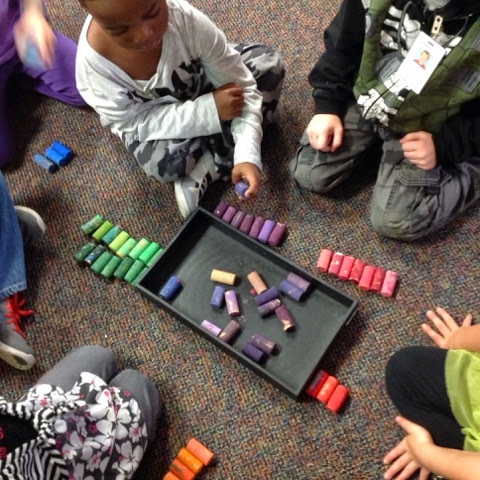I am blessed enough to also teach in a district that does not mandate the curriculum I use. Curriculum programs are purchased to use as tools for our toolbox but not required. Us teachers are trusted and encouraged by our superintendent to write our own curriculum as long as the standards are met. My building principle also has that kind of faith in us as professionals! They know that when it comes to children learning what they need to learn, we are the experts! Project/Inquiry Based Learning is highly encouraged in all grades Pre-K through 12.
Some wonder how I plan for this style of teaching and how it flows. Here are some of the tools that I use.
Once I notice an interest from the students (usually found out through experiences set up for them to explore during play) , I find out what their knowledge and misconceptions are about the subject. Kind of like a KWL chart! I list all that they know about the subject we will dive into. Then I ask what they wonder. I list all of their questions. NOW I can plan!
I take their wonderings and create a web map showing the different directions they want to take the inquiry and possible experiences that will help them find answers to their wonderings. I got this web map from the amazing Joanne Babalis and her amazing blog http://myclassroomtransformation.blogspot.com. On the back I have all of the Literacy and Math Standards listed so that I can highlight the ones we will focus on through the inquiry and project. I add any Science and Social Studies Standards to the bottom of the web map. Here is the link to the web map if you would like it: Web Organizer
Here is the link to the Common Core Standards Sheet for Kindergarten Language and Math: Kindergarten CC Standards
Once I organize my thoughts, I create my inquiry plan using a template I created based on one I found from a Texas school district. It was so long ago I have no memory of which district but if I find out I will add them to give them credit. Their form was 3 pages long. I tweaked it to fit it all on one page. I use this to show the objectives and vocabulary, plan the investigations and materials I will need, show how they will organize the data about what they have learned, possible projects that could result from the inquiry and how we will present the project to the community.
Here is the link to this inquiry planner if you would like to download it: Inquiry/Project Planner
The next step is to start the investigation phase. In early childhood I set out experiences for them to explore and document what they notice. We also do whole group and small group investigations through books, videos and hands-on experiences. As we answer questions, we add the answers to our wonder chart to show our new learning. We organize this data in a web map format for all to see.
Once we have investigated we use organizational maps to show what we learn. In kindergarten it usually consists of web maps, circle maps, tree charts (can/have/are maps), and brace maps (to show part to whole). We will chose one or two to organize our data.
The next step is the project. We take what we learn and create something to show it! The projects can be individual, small group, or whole group.
Some examples of projects in our room have been turning an area of our room into an ocean, forest and sky to show how animals adapt in the winter. The kids signed up to be on the migration team, adaption team or hibernation team. They each became experts on their part during the investigation and worked on their part of the project.
Some examples of projects in our room have been turning an area of our room into an ocean, forest and sky to show how animals adapt in the winter. The kids signed up to be on the migration team, adaption team or hibernation team. They each became experts on their part during the investigation and worked on their part of the project.
 |
| A cave, forest, sky and ocean were created to show what animals do in the winter. |
 |
| Animals were created, labeled and added to the habitats. |
 |
| A group interested in map making and migration created this map showing migration patterns of monarchs, geese and grey whales. |
 |
| An area for everyone in our school to explore sound which is in our science standards. |
 |
| The outside of our castle. |
 |
| A map created by a group interested in maps and where different castles were found in the world. |
 |
| A big book created by a small group about who lived in castles. |
 |
| A small group project during our castle inquiry. |
 |
| A mural planned and created by Kindergartners. |
 |
| Presenting different weapons used during medieval times. |
My new passion that I am learning to incorporate in my classroom is Playbased Learning! I have been amazed by the learning taking place in this way also....but that's another post!

































































